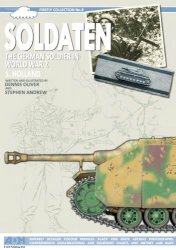The original Australians are among the earliest known true modern humans. To get to Australia required an ocean voyage over considerable distances. Indeed the minimum distance, even during Glacial Maximum, would still be around 50 km. Two open sea routes are most likely as the entry points to Australia. The first is the eastern route via Indonesia to New Guinea and the other is the southern route from Indonesia to Northwest Australia. Either way it suggests that these people had extensive and sophisticated knowledge of working with wood, bamboo, and other related materials. Not only this, but the early Australians are distinguished from the later occupants of Europe in terms of art and burial practice; in both cases in fact, Australia has the earliest evidence of these practices. For example, at Mandu Mandu Rockshelter the earliest known evidence of beads (modified cone shells) has been documented at 32 000 years ago, while the female Mungo individual (LM1) is the oldest cremation known anywhere in the world. By 26 000 years ago, the ancestors of indigenous Australians were using very sophisticated fishing techniques including gill nets and traps.
This does not mean that navigation, art, beadwork, cremation, gill nets, and fishtraps were invented in Australia and spread elsewhere. It may be so, but the sea barriers are vast, and contacts must have been few. Instead, it is more likely that these commonalities mean one of two things. Some of these cultural practices may well have been developed in Australia and in the rest of the world independently: their common humanity responded to similar challenges in similar ways. But some of the Australia/rest-of-the-world similarities are so complex in all their details that only one conclusion can be drawn: they already existed in the common ancestor, before the colonization of Australia over 60 000 years ago. Language surely arose once, as did the control of fire, religion, and music. These are cultural items for which there is no direct evidence, and yet the principle of parsimony suggests very strongly that they are much earlier in their genesis.
It is likely that the original colonization of Australia was based on coastal movements through the landscape; by 25 000 years ago, however, the inland region had been penetrated. The occupation of the interior of the continent may have been via the many extensive river systems. The stone tool tradition for the first 30 000-50 000 years is not particularly distinctive and is referred to as the Core Tool and Scraper Tradition. It was not until the mid-Holocene (around 5000 years ago) that the tool tradition rapidly changed and we get a more refined tradition known as the Australian Small Tool Phase. This new technology includes stone knives, daggers, neatly trimmed spear points and barbs, and many other micro all-purpose tools.
If there was a separate dual migration into Australia by ‘robust’ and ‘gracile’ populations, then there is certainly no evidence for it within the archaeological record. Indeed, overall the archaeological record demonstrates a continuum within and between the earliest inhabitants and the later descendants until the ‘arrival’ of the mid-Holocene small tool tradition.




 World History
World History









